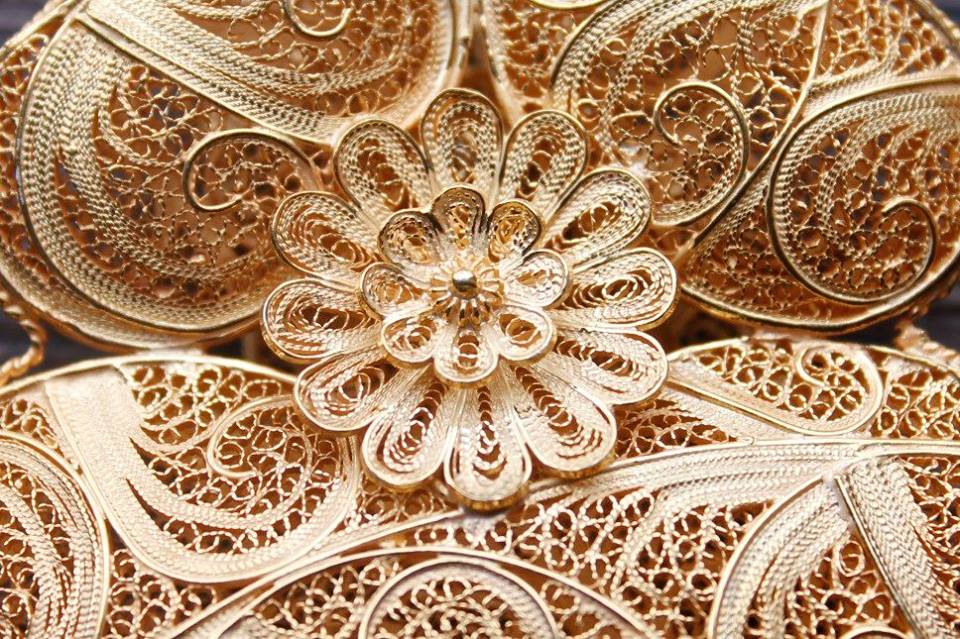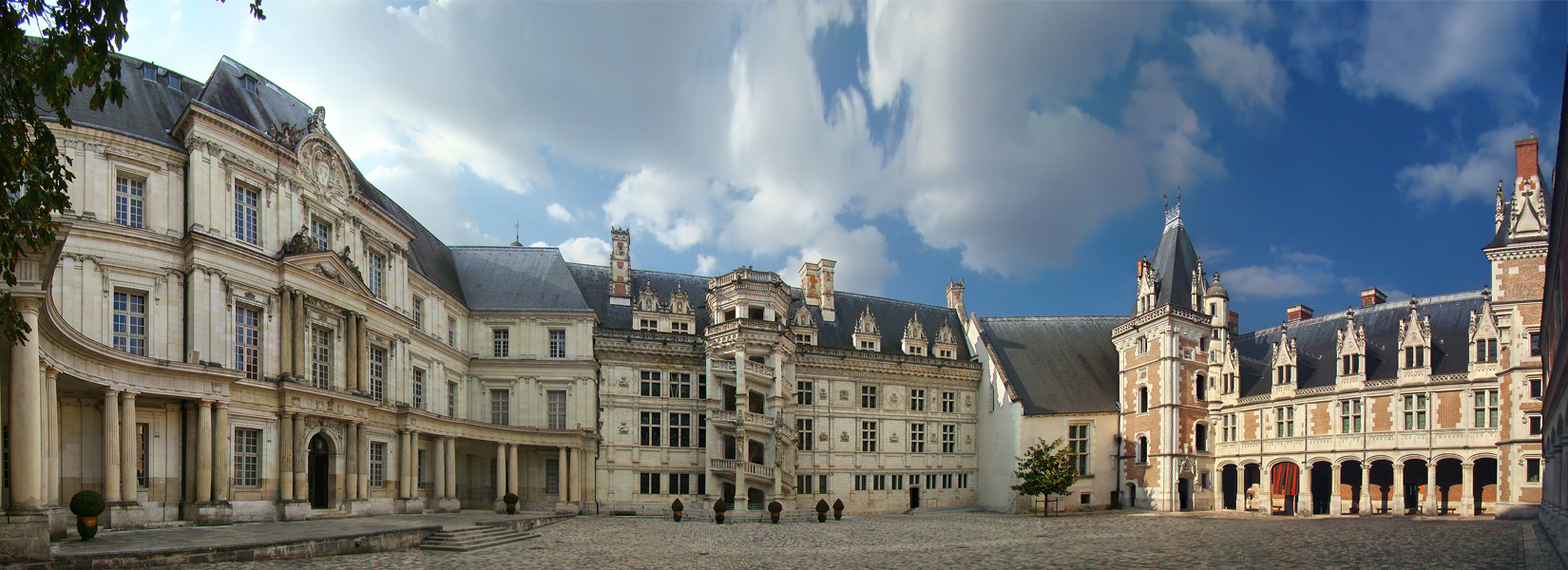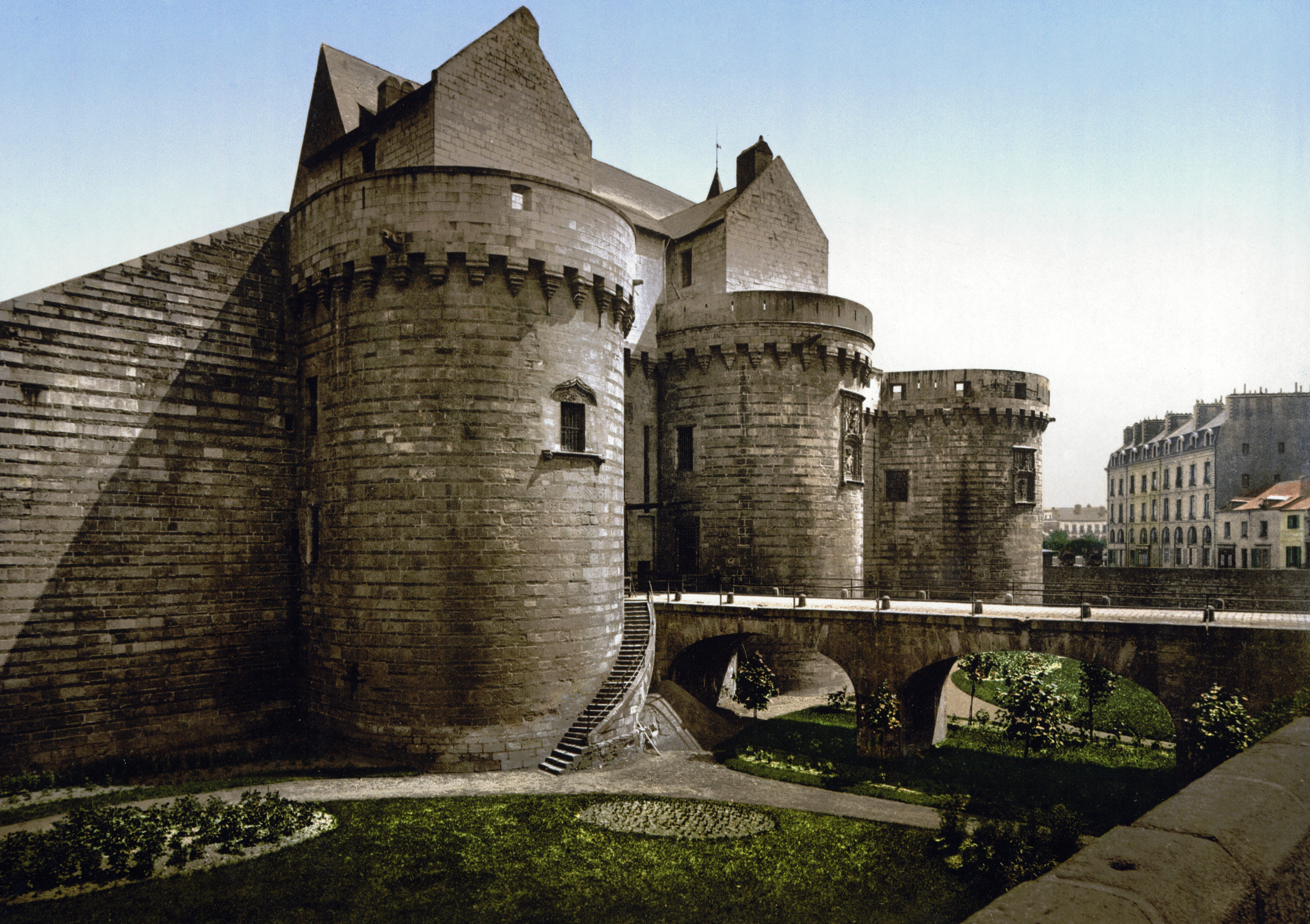|
Anne Of Brittany's Heart Jewel Case
The Anne of Brittany heart jewel case, often referred to as the Anne of Brittany heart reliquary, is a gold funerary object made in the early 16th century to house the heart of Anne of Brittany, Duchess Anne of Brittany (1477-1514), Queen of France. It has been kept at the Musée Dobrée, Musée Départemental Thomas-Dobrée in Nantes since 1896. Stolen during the night of 13-14 April 2018, the jewel case was found by police on 21 April near Saint-Nazaire and returned to the museum in September of the same year. Description The makers of the jewel case are unknown: it may have been designed by Jean Perréal and perhaps executed by an anonymous goldsmith from the court of Blois. However, these are assumptions made in relation to the work carried out for the queen's burial, which is detailed in known archives, unlike the ceremonies for the transfer of her heart. In addition, the absence of a hallmark prevents any attribution. The jewel case (or reliquary) for the heart (known a ... [...More Info...] [...Related Items...] OR: [Wikipedia] [Google] [Baidu] |
Jean Perréal
Jean Perréal (-), sometimes called Peréal, Johannes Parisienus or Jean De Paris, was a successful portraitist for French Royalty in the first half of the 16th century, as well as an architect, sculptor and limner of illuminated manuscripts. He was active mostly in France and in Italy and London as well. Perréal's major patrons were Charles of Bourbon, King Charles VIII, Louis XII and Francis I, all of France. It is mentioned that in honor of Charles of Bourbon he painted escutcheons for the entry of the nobleman to the city of Lyon, but the date of Charles' birth, 1489, and the time of the artist's residence in Lyons do not coincide accurately. His most remarkable works are often considered to be a portrait of Charles VIII (Musée Condé) and a miniature piece, ', an image of a poet who, like Perréal, was a royal valet de chambre. A letter from Perréal to Margaret of Austria survives describing the relative merits of marble and alabaster, signed 'Jehan Perreal de Paris ... [...More Info...] [...Related Items...] OR: [Wikipedia] [Google] [Baidu] |
Filigree
Filigree (also less commonly spelled ''filagree'', and formerly written ''filigrann'' or ''filigrene'') is a form of intricate metalwork used in jewellery and other small forms of metalwork. In jewellery, it is usually of gold and silver, made with tiny beads or twisted threads, or both in combination, soldered together or to the surface of an object of the same metal and arranged in artistic motifs. It often suggests lace and remains popular in Indian and other Asian metalwork. It was popular as well in Italian, French and Portuguese metalwork from 1660 to the late 19th century. It should not be confused with ajoure jewellery work, the ajoure technique consisting of drilling holes in objects made of sheet metal. The English word filigree is shortened from the earlier use of ''filigreen'' which derives from Latin meaning thread and grain, in the sense of small bead. The Latin words gave ''filigrana'' in Italian which itself became ''filigrane'' in 17th-century Frenc ... [...More Info...] [...Related Items...] OR: [Wikipedia] [Google] [Baidu] |
Museum Of Brittany
The Brittany Museum () is a social history museum located in the Champs Libres cultural centre of Rennes, France. Originally structured as an archeology and ethnology museum, it is now a museum of regional history and society – focusing on the conservation, study, and presentation of the history of Brittany and Breton heritage from prehistory to the present day. The provenance of the first items in the collections are from confiscations in 1794 during the French Revolution. The museum has been located in various places over time, notably housed alongside the Museum of Fine Arts of Rennes since 1815 in what was later named the Palais universitaire de Rennes. it moved to its present site in 2006. Collection The current collection consists of over 600,000 objects and documents, of which more than 400,000 are photographic negatives and prints. The collections are co-managed with the local ecomuseum – the Écomusée de la Bintinais. Notable permanent collections include n ... [...More Info...] [...Related Items...] OR: [Wikipedia] [Google] [Baidu] |
Château Of Blois
The Royal Château of Blois (, ) is a château located in the city center of Blois, Loir-et-Cher, in the Loire Valley, France. In addition to having been the residence of the Counts of Blois and some French kings, Joan of Arc also went there by 1429 to be blessed by the Archbishop of Reims before departing with her army to drive against the Kingdom of England, English, who conquered Orléans the previous year. The château effectively controlled the County of Blois up to 1397, then the Duchy of Orléans, and the Kingdom of France between 1498 and 1544. It comprises several buildings, whose construction began in the 13th century and ended in the 17th century. Four different architectural styles are represented within the rectangular edifice, including: some remainings of the 13th-century medieval fortress, the Louis XII Gothic architecture, Gothic-style wing, the Francis I Renaissance architecture, Renaissance-style wing, and the Gaston of Orléans Classical architecture, Classic ... [...More Info...] [...Related Items...] OR: [Wikipedia] [Google] [Baidu] |
Château De Châteaubriant
The Château de Châteaubriant is a medieval castle strongly modified during the Renaissance, located in the '' commune'' of Châteaubriant in the Loire-Atlantique ''département'' of France. The original castle was founded in the 11th century on the eastern border of Brittany and, such as the fortresses in Vitré, Fougères, Ancenis and Clisson, it was defending the duchy against Anjou and the Kingdom of France. The castle was renovated several times during the Middle Ages and the town of Châteaubriant developed at its side. During the Mad War, the castle was seized by the French after a siege. The keep and the halls, partially destroyed, were renovated in the flamboyant style. Eventually, during the 16th century, the château obtained its definitive appearance when the new Renaissance palace was built against the medieval '' enceinte''. After the French Revolution, the château was sold and divided several times, and was finally transformed into an administrative centre, wit ... [...More Info...] [...Related Items...] OR: [Wikipedia] [Google] [Baidu] |
Château Des Ducs De Bretagne
The Château des ducs de Bretagne (, "Castle of the Dukes of Brittany") is a large castle located in the city of Nantes in the Loire-Atlantique ''département'' of France; it served as the centre of the historical province of Brittany until its separation in 1956. It is located on the right bank of the Loire, which formerly fed its ditches. It was the residence of the Dukes of Brittany between the 13th and 16th centuries, subsequently becoming the Breton residence of the French Monarchy. The castle has been listed as a ''monument historique'' by the French Ministry of Culture since 1840. Today the castle houses the Nantes History Museum. Restoration Starting in the 1990s, the town of Nantes undertook a massive programme of restoration and repairs to return the site to its former glory as an emblem of the history of Nantes and Brittany. Following 15 years of works and three years of closure to the public, it was reopened on 9 February 2007, and is now a popular tourist attractio ... [...More Info...] [...Related Items...] OR: [Wikipedia] [Google] [Baidu] |
Bibliothèque Nationale De France
The (; BnF) is the national library of France, located in Paris on two main sites, ''Richelieu'' and ''François-Mitterrand''. It is the national repository of all that is published in France. Some of its extensive collections, including books and manuscripts but also precious objects and artworks, are on display at the BnF Museum (formerly known as the ) on the Richelieu site. The National Library of France is a public establishment under the supervision of the Ministry of Culture. Its mission is to constitute collections, especially the copies of works published in France that must, by law, be deposited there, conserve them, and make them available to the public. It produces a reference catalogue, cooperates with other national and international establishments, as well as participates in research programs. History The National Library of France traces its origin to the royal library founded at the Louvre Palace by Charles V in 1368. Charles had received a collection o ... [...More Info...] [...Related Items...] OR: [Wikipedia] [Google] [Baidu] |
BnF Museum
The BnF Museum or Museum of the Bibliothèque nationale de France, formerly known as the Cabinet des Médailles (), is a significant art and history museum in Paris. It displays collections of the ''Département des Monnaies, Médailles et Antiques de la Bibliothèque nationale de France'' as well as manuscripts and books from the Library's collections. The BnF Museum is located in the Richelieu site, the former main building of the library bordering rue de Richelieu. Overview The Cabinet des Médailles is a museum containing internationally important collections of coins, engraved gems, and antiquities, with its distant origins in the treasuries of the French kings of the Middle Ages. The disruptions of the Wars of Religion inspired Charles IX (1560–1574) to create the position of a ("Special guardian of the King's medals and antiques"). Thus the collection, which has been augmented and never again dispersed – unlike the first royal library, assembled at the Palais du ... [...More Info...] [...Related Items...] OR: [Wikipedia] [Google] [Baidu] |
National Convention
The National Convention () was the constituent assembly of the Kingdom of France for one day and the French First Republic for its first three years during the French Revolution, following the two-year National Constituent Assembly and the one-year Legislative Assembly. Created after the great insurrection of 10 August 1792, it was the first French government organized as a republic, abandoning the monarchy altogether. The Convention sat as a single-chamber assembly from 20 September 1792 to 26 October 1795 (4 Brumaire IV under the Convention's adopted calendar). The Convention came about when the Legislative Assembly decreed the provisional suspension of King Louis XVI and the convocation of a National Convention to draw up a new constitution with no monarchy. The other major innovation was to decree that deputies to that Convention should be elected by all Frenchmen 21 years old or more, domiciled for a year and living by the product of their labor. The National Convent ... [...More Info...] [...Related Items...] OR: [Wikipedia] [Google] [Baidu] |
Carmelite Convent, Nantes
The Carmelite convent at Nantes was a convent of the Carmelite Order established in 1318 in Nantes, France, then situated within the Duchy of Brittany. The convent was gradually destroyed beginning with the French Revolution. Location In the extant urban configuration, the convent was established between and , at the level of , in an area traversed by . History Foundation In 1318, Thibaut II de Rochefort (circa 1260–after 1327), Viscount of Donges, an officer of the Duke of Brittany in Nantes (and perhaps governor of the city), established a Carmelite convent. He adhered to a prevalent tradition during that era, whereby dominant noble families selected a congregation to house their family tombs, enhancing their prestige. The was subsequently regarded as "one of the oldest houses of Breton aristocracy." Thibaut II requested the assistance of six monks from the Ploërmel establishment, the inaugural Carmelite convent in Brittany, established in 1273 by his former over ... [...More Info...] [...Related Items...] OR: [Wikipedia] [Google] [Baidu] |
Tomb Of Francis II, Duke Of Brittany
The tomb of Francis II, Duke of Brittany is a monument located in Nantes, in the Nantes Cathedral, Cathedral of St. Peter. The project was commissioned by Anne of Brittany, Queen of France, who was the daughter of Francis II, Duke of Brittany, Francis and his second wife Margaret of Foix, who is also depicted beside Francis. The tomb was originally located in the chapel of the Carmelites in Cemeteries of Nantes, Nantes. Francis II had wished that his body rest there, to join the remains of his first wife Margaret of Brittany. The tomb eventually received the body of Francis and both his wives, though only his second wife (Anne's mother) is depicted. It was executed in Carrara marble in the early sixteenth century by the sculptor Michel Colombe based on a design by the royal artist Jean Perréal. It is the first major work of art in the Renaissance style in Brittany and is considered a masterpiece of French sculpture. History of the tomb The project was commissioned by Anne to hon ... [...More Info...] [...Related Items...] OR: [Wikipedia] [Google] [Baidu] |
Herald
A herald, or a herald of arms, is an officer of arms, ranking between pursuivant and king of arms. The title is commonly applied more broadly to all officers of arms. Heralds were originally messengers sent by monarchs or noblemen to convey messages or proclamations—in this sense being the predecessors of modern diplomats. In the Hundred Years' War, French heralds challenged King Henry V to fight. During the Battle of Agincourt, the English herald and the French herald, Montjoie, watched the battle together from a nearby hill; both agreed that the English were the victors, and Montjoie provided King Henry V, who thus earned the right to name the battle, with the name of the nearby castle. Like other officers of arms, a herald would often wear a surcoat, called a tabard, decorated with the coat of arms of his master. It was possibly due to their role in managing the tournaments of the Late Middle Ages that heralds came to be associated with the regulation of the ... [...More Info...] [...Related Items...] OR: [Wikipedia] [Google] [Baidu] |








